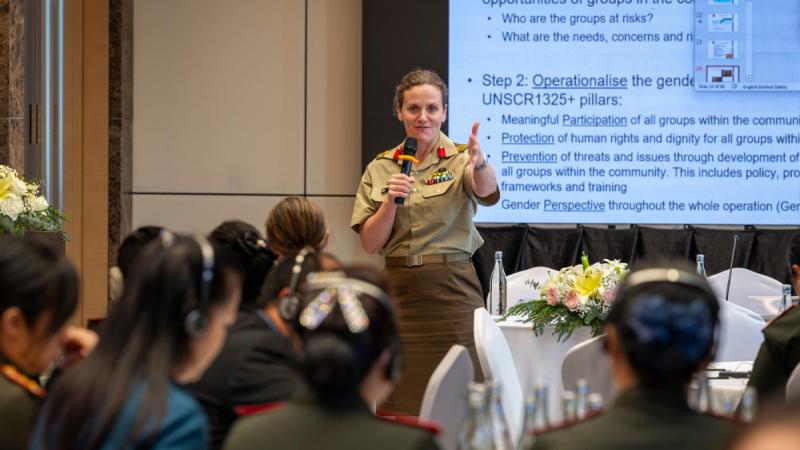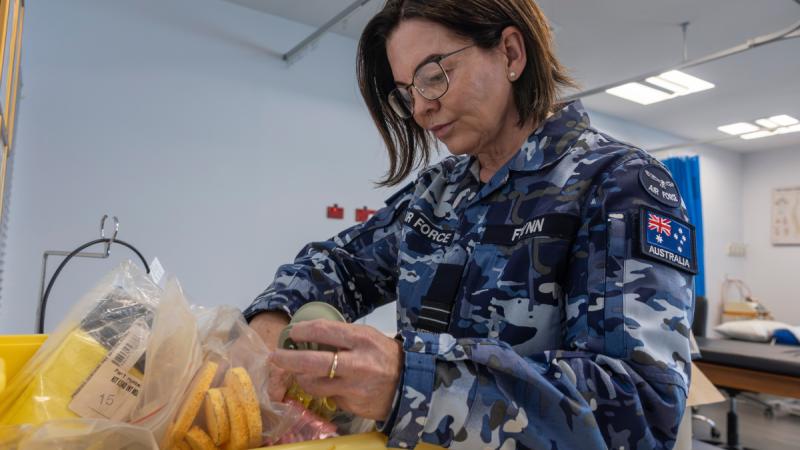8 October 2025
This year’s Exercise Bersama Lima marked a series of firsts and a strong emphasis on future-ready capabilities of the Five Power Defence Arrangements (FPDA).
It integrated humanitarian assistance and disaster relief (HADR) scenarios, expanded into the cyber domain, introduced unmanned aircraft systems and achieved the first aerial resupply using a heli-box drop, reflecting the evolving nature of regional defence cooperation.
The inclusion of HADR scenarios prepared personnel from Australia, Malaysia, New Zealand, Singapore and the United Kingdom for realistic challenges.
Australia's Major Adrian Read highlighted the relevance of this focus, noting working alongside members from various partner nations demonstrated that many had participated in HADR operations.
“This was expected, given the frequent occurrence of disaster events within our shared region,” he said.
To provide tactical-level training, Malaysian and Singaporean medical teams, observed by Australian personnel, worked together on simulated casualty evacuations.
Australian doctor Captain Elise Chalk said the training was invaluable, particularly the opportunity to observe the Singaporean and Malaysian teams during helicopter-based evacuation drills.
“The HADR activity showcased the seamless movement of casualties from evacuation to stabilisation and onward evacuation, highlighting the capability and professionalism of the Malaysian and Singaporean medical teams,” Captain Chalk said.
“It gave us valuable insight into how partner nations operate and integrate, showing that while our methods may differ, our shared commitment to delivering high-quality care remains the same.”
'It proves just how vital aerial resupply is when disaster strikes and help is needed fast.'
Participants gained insight into Malaysia’s emergency response system, including the roles of state and regional civil defence forces and how the Malaysian Armed Forces integrate with them.
The cyber domain was another key focus.
Flying Officer Brock Mathison said it was important for the coalition to strengthen cyber resilience.
“This integration piece with our coalition partners has enabled us to uplift the cyber security awareness and hygiene across the operation cells within the Exercise Bersama Lima contingent,” Flying Officer Mathison said.
Meanwhile, Air Vice-Marshal Nathan Christie celebrated the first aerial resupply in a Bersama Lima exercise.
He said the successful and safe drop from a Royal Australian Air Force C-27J Spartan off Tioman Island demonstrated the growing complexity and capability of FPDA training.
“It proves just how vital aerial resupply is when disaster strikes and help is needed fast,” Air Vice-Marshal Christie said.
Also, the first unmanned aircraft systems (UAS) were introduced into the exercise during the multilateral company assault.
“The integration of UAS into the land domain is a clear example of FPDA leveraging emerging and new capabilities to gain tactical advantages on the battlefield,” Air Vice-Marshal Christie said.
“This achievement highlights FPDA’s ongoing commitment to remain relevant through the use of technology and derive greater complexity in our exercises.”
In the maritime domain, dynamic maritime cooperation was demonstrated through activities such as combined boarding parties, naval gunfire support, officer-of-the-watch manoeuvres, sailing in company, air defence drills, and replenishment at sea, highlighting the proficiency and interoperability of the FPDA navies.


